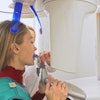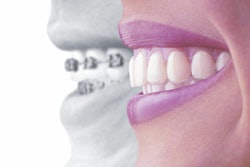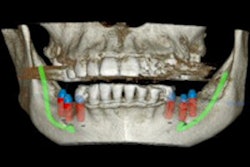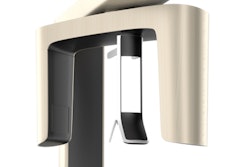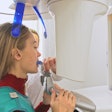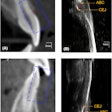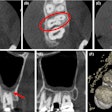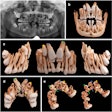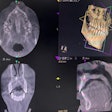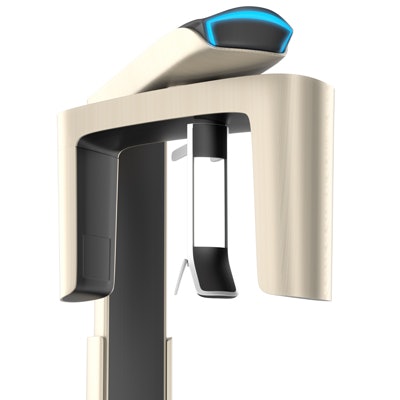
When patients with adult tooth crowding seek clear aligner treatment, creating space and improving their bone system are key markers of treatment success. Researchers used 3D cone-beam CT (CBCT) to see if clear aligner treatment and interproximal enamel reduction (IER) benefited the bone system at the mandible and maxilla.
They found that treating adult tooth crowding using a clear aligner had a positive effect on interradicular bone volume, particularly those adult female patients with periodontally high-risk dentition. Their study was published on June 8 in BMC Oral Health.
"This is extremely important with regard to the treatment outcome, since IER and root proximity have been matters of debate in the literature and teeth should remain firmly embedded in their alveolar sockets," wrote the authors, led by Andreas Hellak, Dr med dent, of the department of orthodontics at the University Hospital Giessen and Marburg in Marburg, Germany.
Expansion of the arch
Among the treatment options for relieving adult crowding is the expansion of the dental arch in the labial direction to provide space for so-called normal positioning of the affected teeth, such as with aligner therapy. Interproximal enamel reduction is another method of creating space.
The researchers used 3D images to measure the success of treating adult crowding using Invisalign aligners (Align Technology) and interproximal enamel reduction. They also measured changes in the volume of interradicular bone. They used a 3D CBCT system (KaVo 3D eXam DVT system, KaVo) for analysis to learn how the bone structures responded to tooth movements.
The team retrospectively reviewed a total of 60 CBCT scans from 30 adult patients (28 women) to three-dimensionally measure bone volume. Half of the scans were performed before treatment and the other half at treatment conclusion. The researchers measured interradicular bone volume at four levels in the anterior tooth areas of the maxilla and mandible.
The researchers reported a slight overall increase in the quantity of bone (0.12 ± 0.73 mm) while noting that this increase differed by site:
- There was a highly significant increase in bone in the mandible (0.40 ± 0.62 mm; p < 0.001).
- There was a slight loss of bone in the maxilla that was highly significant in the apical third (-0.16 ± 0.77 mm; p = 0.001).
Before treatment, just over 17% of the interradicular measurement points (720 in total) had an interradicular distance of 0.8 mm or less, and the majority of these were in the mandible. As the table below shows, treatment had a positive effect, as just under 8% of the measurement points still had an interradicular distance of 0.8 mm or less afterward.
| Impact of treatment on tooth overcrowding Interradicular distances ≤ 0.8 mm before & after treatment (n = 720) |
||
| Before | After | |
| Maxilla | 1.53% | 1.11% |
| Mandible | 15.69% | 6.81% |
| Total | 17.22% | 7.92% |
The researchers also studied whether interproximal enamel reduction was effective. They found a positive effect after treatment in 62.5% of all interdental spaces in which interproximal enamel reduction was carried out; however, the distance decreased in 37.5% (see table below). Overall, the reduction did not have any statistically significant effects on the changing interradicular space conditions, the researchers concluded.
| Effect of IER treatment on interradicular distance in 180 interproximal spaces | ||
| Without IER (n = 76) |
With IER (n = 104) |
|
| Interradicular distance increased | 63.16% | 62.50%* |
| Interradicular distance decreased | 36.84% | 37.50%* |
Positive effect
The authors noted that this was a retrospective study with a risk of bias. While a prospective randomized controlled trial would be interesting, it could currently not be done because of the principle that radiation exposure should be "as low as reasonably achievable," they wrote.
In general, CBCT is not indicated as a routine method for the imaging of bone support because of the dosage of radiation, they added.
However, treatment for adult crowding using an aligner and interproximal enamel reduction appears to have a positive effect on interradicular bone volume, but this effect is apparently independent of the reduction, the study authors concluded.
"In the group of patients investigated in the present study, treatment for adult crowding was associated with an overall increase in interradicular space," they wrote.
